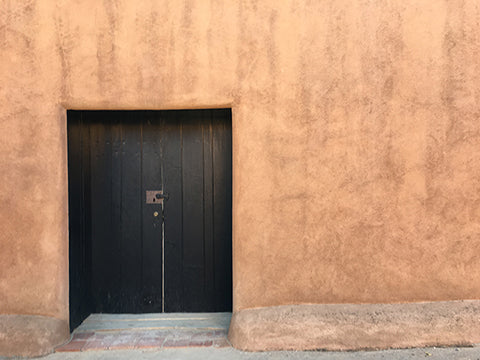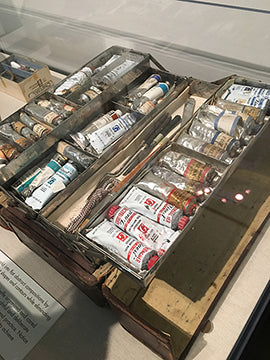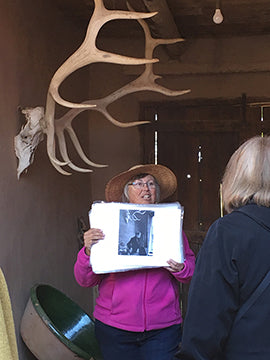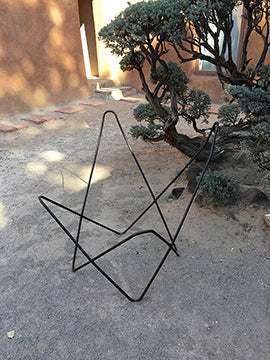Georgia on My Mind: A Visit to Georgia O’Keeffe’s Home and Landscape
by Leslie Parke

Georgia O’Keeffe’s house and landscape have occupied our imagination almost as much as her paintings.
O’Keeffe left New York to take up residence first on Ghost Ranch and then in Albiquiu, New Mexico. I had a vivid image of what her surroundings looked like mostly through the black and white photographs of her in these settings.
What I found when I went there is that some images were remarkably accurate and others didn’t tell the whole story.
I thought, for example, that her house was miles out in the desert in complete isolation. But, in fact, she lived in a small town not unlike the one I live in, with a school, a bunch of houses, and a general store.
She lived on the edge of the town, so that her views, at least in one direction were not obstructed.

This view, for example, could be seen from her bedroom.
The road has been up-graded and is much used today. When she lived there it probably didn’t have much traffic. Here is a painting she did of this road in winter.

The surrounding landscape is remarkably like her paintings.




Even parts of her house are represented in her work.



Before heading to her house I checked out the Georgia O’Keeffe Museum in Santa Fe, and was happy to find her paintbox and brushes.
O’Keeffe used mostly Blocx paint, but also had Winsor and Newton and Grumbacher.

Around her house there were the proverbial bits of nature.

The famous elk horn under which she was photographed.


O’Keeffe’s stone and shell collection.

And rustic door to her court yard.
What was more surprising was the interior of her house. It was completely modern with mid-century modernist furniture.
We weren’t allowed to photograph it, but this skeleton of a chair was in the courtyard.

About the Author
Leslie Parke
One of the most visually and intellectually complex painters exhibiting since the 1970s, Leslie Parke’s paintings and photography challenge our perceptions of the visual world. Themes of light, transparency, and reflection are explored through everyday objects - shrink-wrapped cargo, discarded cans, a tangle of threads - creating a tension between what is real and what is perceived. Parke began her career in the shadow of New York’s postwar art movements, following the mid-century modernist artists Helen Frankenthaler, Kenneth Noland, and Jules Olitski. Her work is deeply grounded in art history; she literally deconstructed the works of earlier artists such as Giotto, Matisse, and Ingres. Her formalist approach to appreciating art informs her own process which, as she states, is rooted in paint.
Leslie's website: https://leslieparke.com




